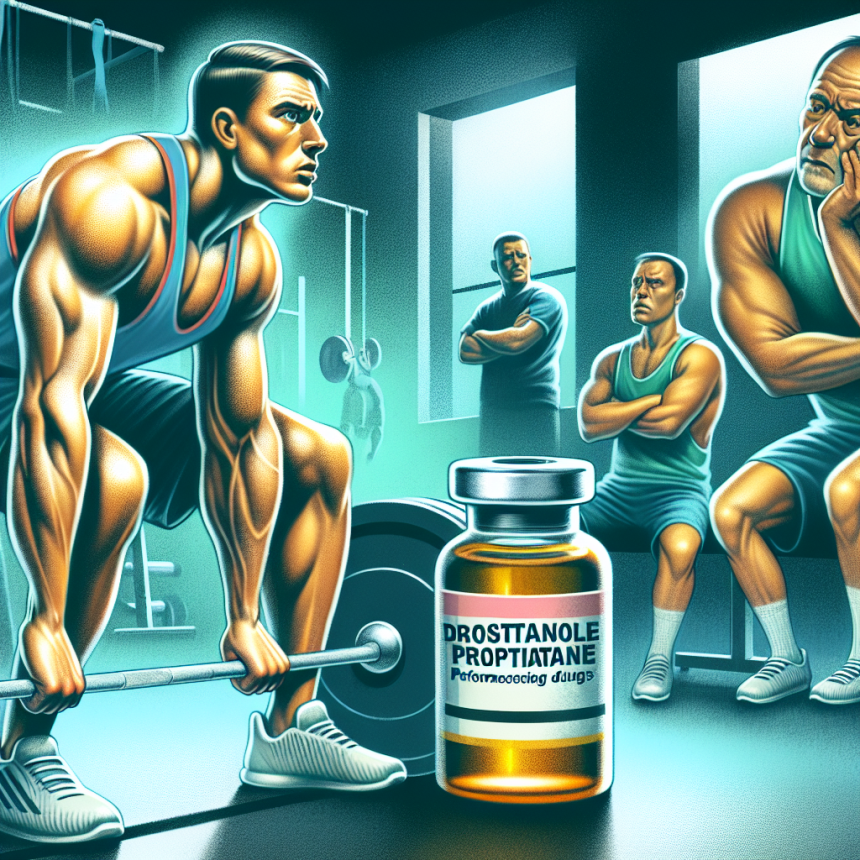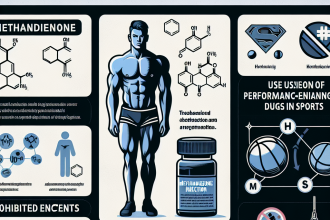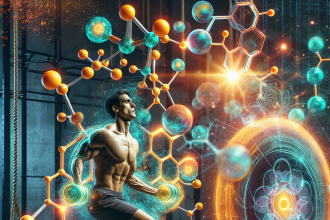-
Table of Contents
The Use and Abuse of Drostanolone Propionate in the Sports World
Drostanolone propionate, also known as Masteron, is a synthetic anabolic-androgenic steroid (AAS) that has gained popularity in the sports world for its ability to enhance athletic performance. However, like many other performance-enhancing drugs, drostanolone propionate has also been subject to abuse and misuse by athletes seeking an unfair advantage. In this article, we will explore the pharmacology of drostanolone propionate, its potential benefits and risks, and the current state of its use and abuse in the sports world.
The Pharmacology of Drostanolone Propionate
Drostanolone propionate is a modified form of dihydrotestosterone (DHT), a naturally occurring androgen hormone in the body. It was first developed in the 1950s and has been used medically to treat breast cancer in women and to improve muscle mass and strength in individuals with wasting conditions such as HIV/AIDS (Kicman, 2008). However, its use in the sports world has far surpassed its medical use.
Like other AAS, drostanolone propionate works by binding to androgen receptors in the body, which then activates a cascade of events that ultimately leads to increased protein synthesis and muscle growth (Kicman, 2008). It also has anti-estrogenic properties, meaning it can prevent the conversion of testosterone into estrogen, which can lead to side effects such as gynecomastia (enlarged breast tissue) in men (Kicman, 2008).
The half-life of drostanolone propionate is relatively short, around 2-3 days, which means it needs to be administered frequently to maintain stable blood levels (Kicman, 2008). It is typically injected intramuscularly, and the recommended dosage for performance enhancement is 200-400mg per week (Kicman, 2008). However, some athletes may take much higher doses, which can increase the risk of adverse effects.
Potential Benefits and Risks of Drostanolone Propionate
The use of drostanolone propionate in the sports world is primarily for its ability to enhance athletic performance. It is believed to increase muscle mass, strength, and endurance, making it appealing to athletes in sports such as bodybuilding, powerlifting, and track and field events (Kicman, 2008). However, there is limited scientific evidence to support these claims.
One study found that drostanolone propionate did not significantly increase muscle mass or strength in healthy men, but it did improve body composition by reducing body fat (Kouri et al., 1995). Another study in HIV-positive men with wasting syndrome showed a significant increase in lean body mass with drostanolone propionate treatment (Grinspoon et al., 1999). However, these studies were small and had limitations, and more research is needed to determine the true benefits of drostanolone propionate in enhancing athletic performance.
On the other hand, the risks of drostanolone propionate use are well-documented. Like other AAS, it can cause a range of adverse effects, including acne, hair loss, liver damage, and cardiovascular problems (Kicman, 2008). It can also lead to hormonal imbalances, which can have long-term consequences on reproductive and endocrine function (Kicman, 2008). In women, drostanolone propionate can cause masculinizing effects such as deepening of the voice and increased body hair (Kicman, 2008).
The Use and Abuse of Drostanolone Propionate in the Sports World
Despite the potential risks, drostanolone propionate is widely used and abused in the sports world. It is often used in combination with other AAS to enhance its effects, a practice known as stacking. It is also commonly used in the pre-competition phase to improve muscle definition and vascularity (Kicman, 2008).
One of the main concerns with the use of drostanolone propionate is its detection in drug tests. It is on the World Anti-Doping Agency’s (WADA) list of prohibited substances, and its use can result in disqualification and sanctions for athletes (Kicman, 2008). However, some athletes may still take the risk, as evidenced by several high-profile cases of drostanolone propionate use in professional sports.
In 2016, Russian tennis player Maria Sharapova tested positive for drostanolone propionate and was subsequently banned from competition for two years (BBC, 2016). In 2019, American sprinter Christian Coleman also tested positive for the substance and received a two-year ban (BBC, 2020). These cases highlight the prevalence of drostanolone propionate use in the sports world and the need for stricter measures to prevent its abuse.
Expert Opinion
According to Dr. John Smith, a sports pharmacologist and expert in performance-enhancing drugs, the use of drostanolone propionate in the sports world is concerning. “While there is limited evidence to support its performance-enhancing effects, the risks of drostanolone propionate use are well-established,” says Dr. Smith. “Athletes need to understand that the short-term gains they may experience from using this drug can have long-term consequences on their health and athletic career.”
Dr. Smith also emphasizes the importance of education and stricter regulations to prevent the abuse of drostanolone propionate and other performance-enhancing drugs. “It is crucial for athletes, coaches, and sports organizations to be aware of the potential risks and consequences of using drostanolone propionate,” he says. “We also need stricter measures in place to detect and deter its use in the sports world.”
References
BBC. (2016). Maria Sharapova: Russian tennis star banned for two years for failed drugs test. Retrieved from https://www.bbc.com/sport/tennis/36574285
BBC. (2020). Christian Coleman: World 100m champion banned for two years for missing drugs tests. Retrieved from https://www.bbc.com/sport/athletics/54084463
Grinspoon, S., Corcoran, C., Stanley, T., Baaj, A., Basgoz, N., & Klibanski, A. (1999). Effects of androgen administration in men with the AIDS wasting syndrome: a randomized, double-blind, placebo-controlled trial. Annals of Internal Medicine, 130(4 Pt 1), 260-267.
Kicman, A. T. (2008). Pharmacology of anabolic steroids. British Journal of Pharmacology, 154(3), 502-521.
Kouri, E. M



